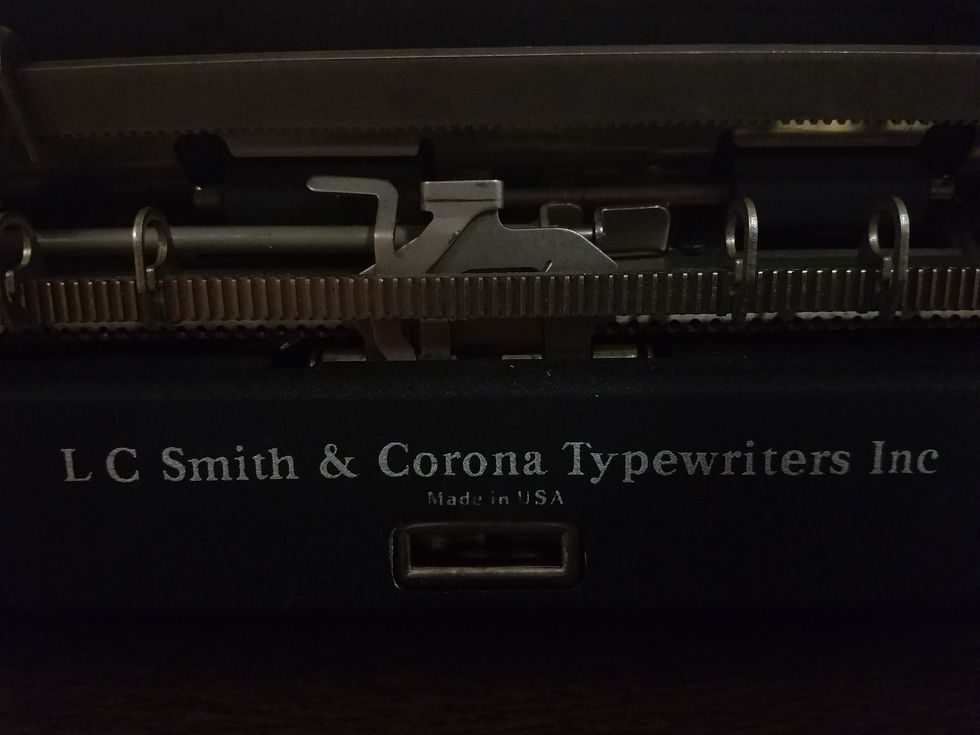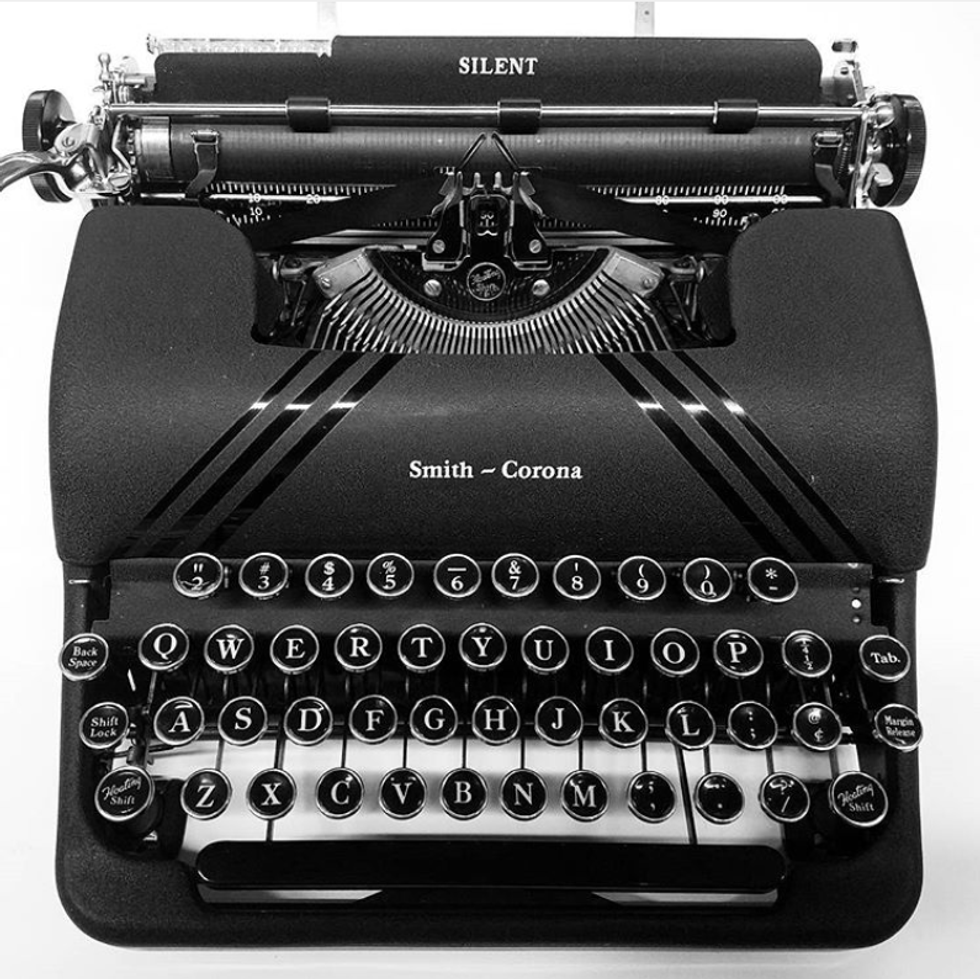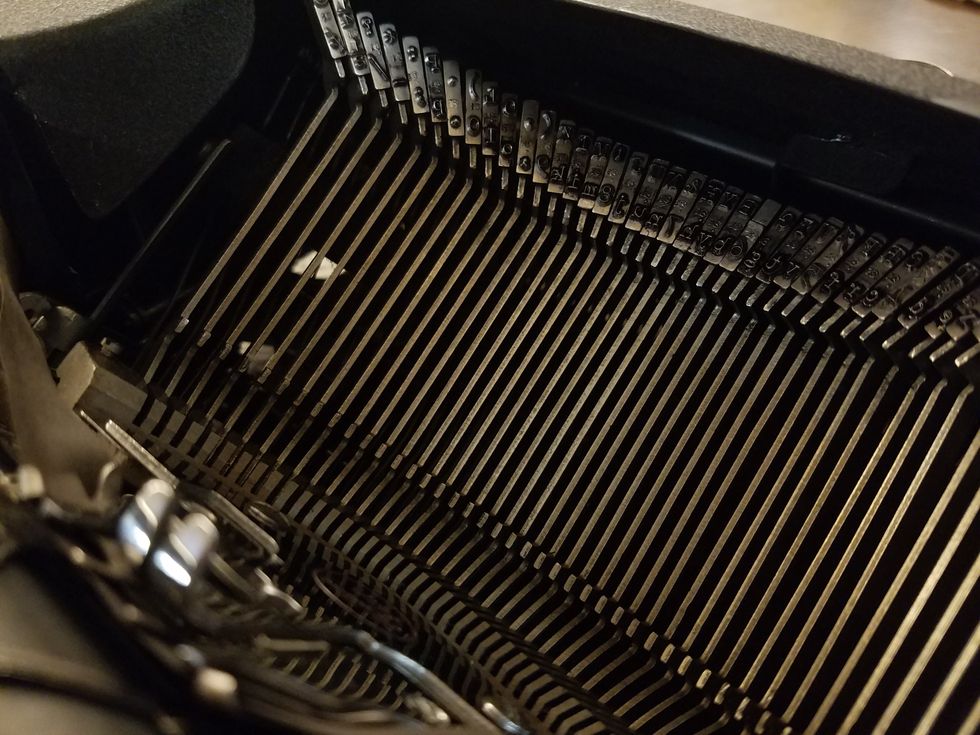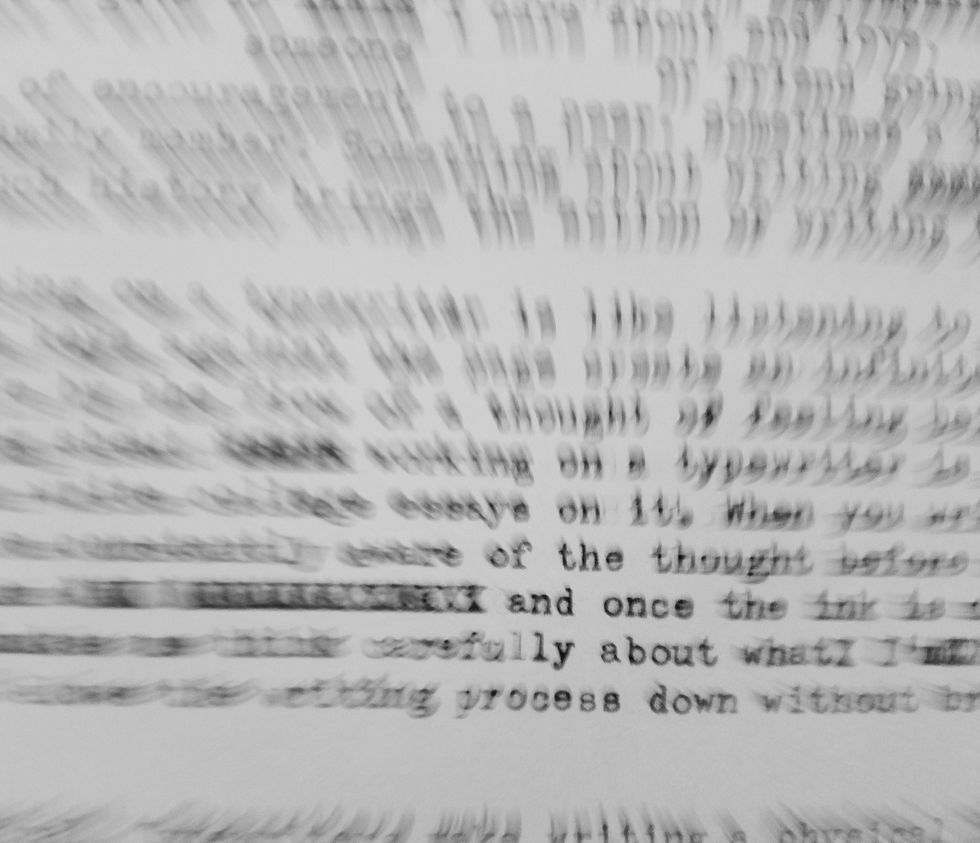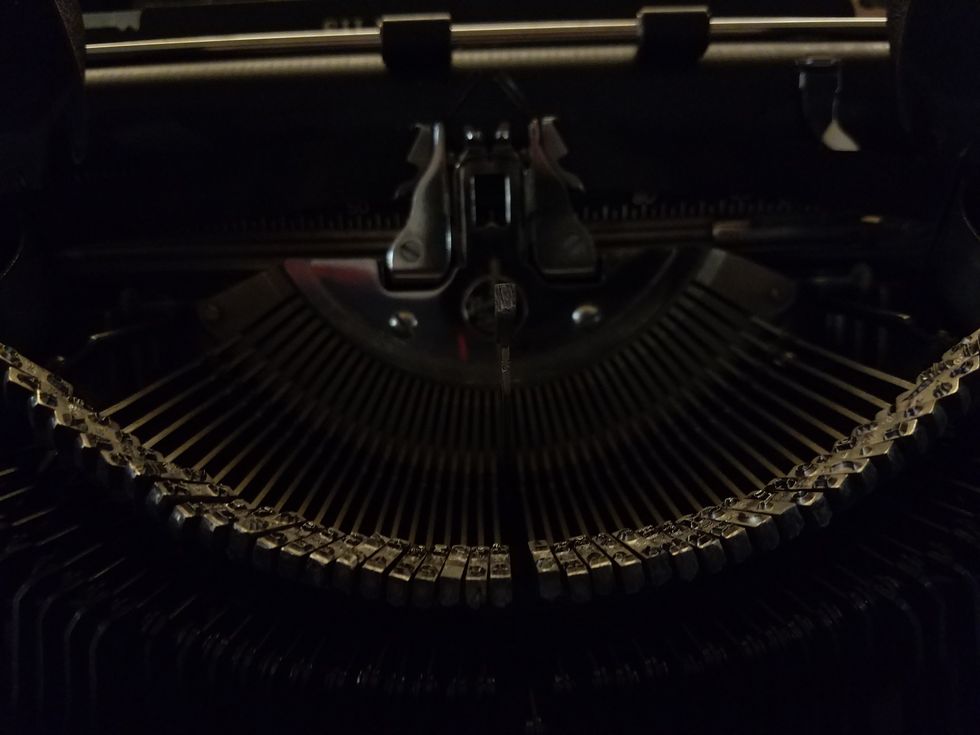IT'S A THICC BOI AND IT'S GOT A HISTORY
It’s over 15 pounds, black, and looks like it’s carried in a case for a musical instrument. Which oddly enough, is more along the lines of what it turns writing into. The machine I use is a 1949 Smith-Corona Silent portable manual typewriter (a real mouthful).
I bought her off a guy who’s mother did envelope art during WW2 to scrape up a little extra cash. During the war she painted a bomber for the Air Force and was sent a letter by none other than Walt Disney, letting her know how much he enjoyed her illustrations. Her son inherited the machine and because none of his kids wanted it and his grand kids didn’t know what a typewriter was, I bought it off him for fifty bucks.
A week later, it showed up in a big, heavy black box and I went straight to work on it. It had been sitting in a basement for over fifty years and I spent about 12 hours hunched over it, cleaning every nook and cranny. When I finished, it was shining like brand new and worked just about as well as the day it was first purchased.
I had no idea whether or not I'd enjoy writing on a typewriter, but I took a chance because I was tired of being distracted by the devices and the temptations of the online world. Something that modern computers make so available. That, and the week before I bought the thing, I had just lost an entire short story when my computer crashed on me.
(The back of my Smith-Corona. Manufactured in the USA.)
WHAT IT MEANS TO WRITE ON A TYPEWRITER
Nowadays I write almost everything on my typewriter, including this article. It would be ironic if I wrote an article about typewriters on a laptop, so there you go. I wrote my first play on the thing, my first short story, and every single letter I've given to someone I care for or love.
Sometimes it’s a letter of encouragement to a peer or friend going through a rough patch, sometimes it’s a letter to a family member for a birthday or special occasion, and every so often it’s even a love letter. Whatever it is I’m writing, something about writing on a machine that has so much history brings the action of writing to life.
(My Typewriter all cleaned up.)
IT'S A MUSICAL INSTRUMENT AND A TOOL OF SELF-EXPRESSION
Writing on a typewriter is like listening to a musical instrument. The tapping of the keys and their impacts against the page create an infinite combination of sounds. The sound it makes is brought to life by the flow of a thought or feeling being carried out by my fingers. Everything about working on a typewriter is a labor of love (why I never write collage essays on mine).
When you write on a typewriter, you have to be constantly aware of the thought before the actual writing. Mistakes are easy to make and impossible to correct. Once the ink is on the page, it’s there to stay. This makes me think carefully about what I’m trying to say before I say it. It’s a tool that slows down the writing process without bringing it to a halt.
(The inside of my Smith-Corona. When I got it, there was gunk between every key.)
IT'S PHYSICALLY DEMANDING
Typewriters make writing a physical job as well as a mental one. Everything about it demands a movement from you. You have to load each page manually. Which is fine in my opinion since one page on my typewriter is equivalent to about 2.5 pages on a laptop.
You have to really hit the keys in order to make sure they strike properly. I can’t tell you how many times my fingers and hands were sore or cramping after writing for an hour or two. When I started out, 30 minutes was enough to make me want to quit.
Every time you hear the bell ring, you have to pull the carriage back to start the next line. The sound of the bell is oh-so-satisfying when you’re on a roll and hear it once every half a minute or so.
Every one of these things took a lot of time to get used to, but since I’ve been writing on it for over a couple of years now, I can write almost as fast on my typewriter as I ever could on a laptop.
IT MAKES ME A BETTER WRITER
Writing on a typewriter has made me a better writer. It’s forced me to become a better speller. I was one of the worst spellers imaginable when I was a kid. Could hardly make it through a sentence without misspelling something (exaggeration, but you get the point). It was incredibly embarrassing and to this day I still suck, but I’m better because of my typewriter.
I’m better with punctuation and sentence structure. Having started writing on a typewriter it’s easier to have complete thoughts that flow from one into the next. On a laptop you don’t have to consider where your sentence is going. On a typewriter, you have an entire sentence planned out in your mind before you hit a key.
It makes the way you think in a complete manner. When you think in complete sentences, this extends to how you speak and express ideas. It’s made me a better communicator and debater. It's also helped me to be better about organizing and processing my ideas in a way that others can understand. The benefits of a typewriter on a my writing, isn't something I could have predicted when researching my first purchase.
(Just a picture of my first draft of this article fresh off the press. The dark X's are where I made a mistake and covered the word.)
TECHNOLOGY STILL HAS IT'S PLACE
Just because I write on a typewriter, doesn’t make me some hipster free loving fool. In fact, writing on a typewriter uses a lot of paper, though less than you probably think. I do recycle though, and it helps to buy environmentally conscious paper rather than byproducts of deforestation. I also didn’t ditch my laptop as soon as my typewriter arrived. I still have it and I still use it, but only after my first draft.
Any first draft of something I write is usually done on my typewriter. Once I have a first draft, I go through and correct my grammar and spelling; adding notes where I could improve what's there or add something that occurs to me later. Lastly, I rewrite the entire thing on my laptop for digital distribution. This sounds like a lot of work and it is, but that rewriting process prepares a draft for readers faster than repeatedly rereading what I’ve written on my laptop. It’s a two step, two draft process, that seemingly without fail, preps my work for the next step of the writing process, the readers.
(A view of the keys from under the hood.)


